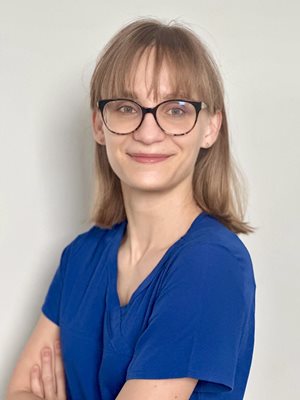It was my third ESTRO congress, but this year I had the opportunity to attend it for the first time in Scotland. The theme "Radiation Oncology: bridging the care gap" was reflected in various sessions. This congress was the largest ESTRO congress in terms of attendance (almost seven thousand participants). The scale and momentum were undoubtedly impressive.
For five days in May, Glasgow was the world capital city of radiotherapy and oncology. The atmosphere was stimulating. Experts from all over the world and those hungry for knowledge gathered at the Scottish Event Campus. The number and quality of interdisciplinary sessions combining clinical radiation oncology, medical physics and biology made it special. There was something for every taste.
At the beginning, Dr Anna Kirby and the Glasgow City Representative welcomed us at the opening ceremony. The ceremony was made memorable by Prof. Umberto Ricardi’s inspiring lecture titled “Bridging the care gap – A fascinating new era for radiotherapy in the treatment for haematological malignancies”. Prof. Ricardi received The Breur Award - the highest honour that can be conferred on an ESTRO member in recognition of a major contribution to European radiotherapy. The captivating performance of the Scottish bagpipers was the culmination of the first session of ESTRO 2024.
This year I debuted as a co-chair. It was a great privilege for me to co-chair the lung session with Prof. Esther Troost. The speakers in this session were high-flyers. The presentations focused on lung cancer as well as pleural mesothelioma radiotherapy. They emphasised the fundamental role of immunotherapy and re-irradiation.
I was pleasantly surprised by the H&N contouring workshops given by Dr. Olwen Leaman, Dr. Ana Rita Simoes, and Prof. Jon Cacicedo. They provided an enriching insight into challenging head and neck anatomy, contouring recommendations with comments and practical advice. The workshop was top-notch.
I attended many lectures, but I was most captivated by clinical topics, and sessions about the latest trials and guidelines which is something that I could use in my clinical practice. They entirely fulfilled my expectations. A good example could be Dr. Antonella Camirelli’s presentation titled: “Managing treatment-related toxicities in radiation oncology”. The author summarised the most common complications after radiotherapy and provided evidence-based advice for management. Besides, it was delightful to see my colleagues from Poland as chairs and speakers. Therefore, I was slightly disappointed that I was not able to attend many interesting clinical sessions which were held in small rooms. Fortunately, it is possible to catch up on the recordings from the congress platform.
It was amazing to be surrounded by so many experienced scientists and I left Glasgow thinking about how I can get better and better.
See you next year in Vienna!

Izabela Zarębska
Department of Clinical Radiotherapy, Department of Radiosurgery and Neurooncology
Franciszek Lukaszczyk Oncology Center, Bydgoszcz, Poland
zarebskai@co.bydgoszcz.pl